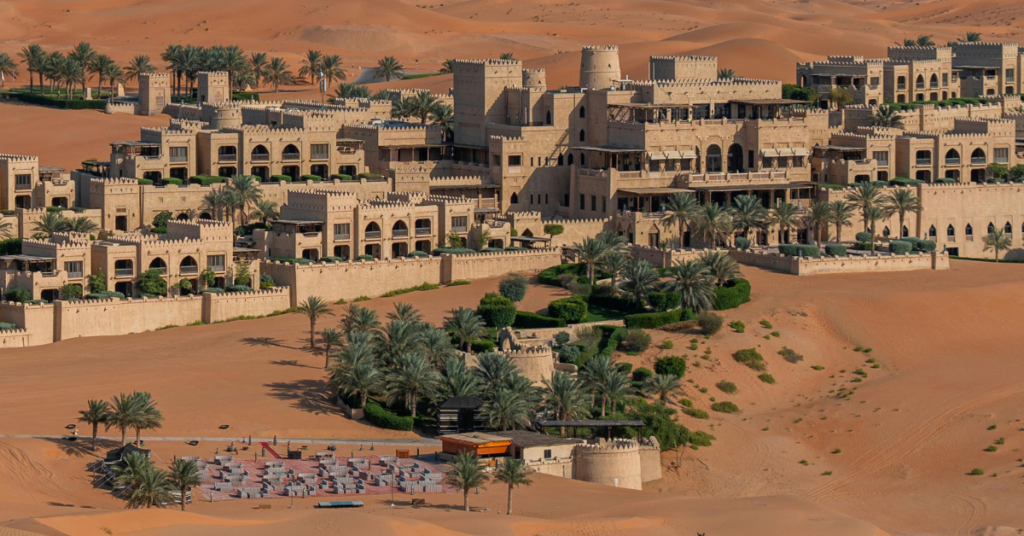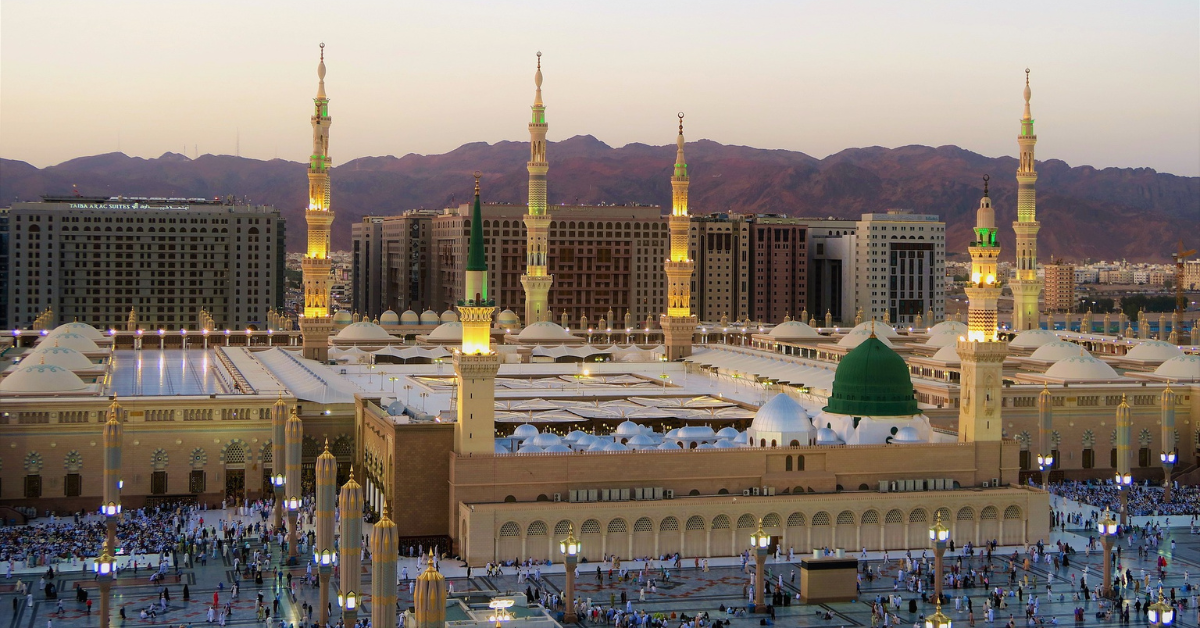Hey, fellow history enthusiasts, Today, I am thrilled to take you on a captivating journey through the rich and storied past of Al-Masjid an-Nabawi also known as the Prophet Muhammad’s S/w(PBUH) Mosque. Nestled in the heart of Medina, Saudi Arabia, this sacred site holds a special place in the hearts of millions of Muslims worldwide. Join me as we delve into its fascinating history and discover the timeless significance of this revered sanctuary.
The Origins: A Place of Divine Revelation

Al-Masjid an-Nabawi traces its origins back to the time of Prophet Muhammad S/w (peace be upon him) himself. Built by the Prophet Muhammad’s S/w(PBUH) and his companions shortly after their migration to Medina in 622 CE, it served as a place of worship and community gathering for the growing Muslim community. Over the centuries the mosque underwent several expansions and renovations, each reflecting the evolving architectural styles and religious practices of the time.
Architectural Splendor: A Testament to Faith and Devotion
One of the most striking features of Al-Masjid an-Nabawi is its exquisite architecture, blending traditional Islamic design elements with modern innovations. The mosque’s iconic green dome, erected during the Ottoman era stands as a symbol of the enduring legacy of Islam and the Prophet’s teachings. Surrounding the central courtyard are intricately carved columns adorned with verses from the Quran and delicate geometric patterns showcasing the unparalleled craftsmanship of Muslim artisans throughout the ages.
Sacred Significance: A Beacon of Spiritual Guidance

Beyond its architectural beauty, Al-Masjid an-Nabawi holds profound spiritual significance for Muslims around the world It is believed to be the final resting place of Prophet Muhammad S/w (peace be upon him),making it one of the holiest sites in Islam after the Kaaba in Mecca. For centuries pilgrims from every corner of the globe have flocked to Medina to pay their respects and seek blessings at the Prophet Muhammad’s S/w(PBUH) mosque reaffirming their faith and devotion to the teachings of Islam.
FAQ’s
What is the significance of Al-Masjid an-Nabawi in Islam?
Al-Masjid an-Nabawi holds immense importance in Islam as the final resting place of Prophet Muhammad S/w (peace be upon him).It is considered one of the holiest sites in Islam after the Kaaba in Mecca and serves as a place of prayer(Namaz), spiritual reflection, and community gathering for Muslims around the world.
Can non-Muslims visit Al-Masjid an-Nabawi?
While Al-Masjid an-Nabawi primarily serves as a place of worship for Muslims, Non-Muslim visitors are welcome to explore the mosque’s exterior and surrounding areas. However, access to the inner sanctuary including the Prophet Muhammad’s S/w(PBUH) tomb is restricted to Muslims only.
What is the significance of the green dome at Al-Masjid an-Nabawi?
The Iconic green dome of Al-Masjid an-Nabawi is a Symbol of the mosque’s historical and spiritual significance. It was erected during the Ottoman era and marks the location of the Prophet Muhammad’s S/w(PBUH)tomb. The color green is also associated with paradise and is commonly used in Islamic architecture as a symbol of fertility and life.
How old is Al-Masjid an-Nabawi?
The original construction of Al-Masjid an-Nabawi dates back to the time of Prophet Muhammad S/w(peace be upon him)in the 7th century CE. Over the centuries the mosque has undergone numerous expansions and renovations with each phase adding to its architectural splendor and religious significance.
Is photography allowed inside Al-Masjid an-Nabawi?
While photography is generally permitted in the outer courtyards and surrounding areas of Al-Masjid an-Nabawi, it is advisable to exercise discretion and respect the sanctity of the mosque. Inside the inner sanctuary and around the Prophet Muhammad’s S/w(PBUH) tomb, photography is strictly prohibited out of reverence for the site’s religious significance.
Conclusion
In conclusion, Al-Masjid an-Nabawi stands as a living testament to the rich history and enduring legacy of Islam. From its humble beginnings as a simple mosque in the desert to its current status as a global symbol of spiritual guidance and unity, it continues to inspire millions of believers worldwide. As we reflect on its timeless significance, let us strive to honor the teachings of Prophet Muhammad (peace be upon him) and embody the values of compassion, tolerance, and peace that lie at the heart of Islam.
So, fellow history buffs, are you ready to embark on your own journey of discovery and exploration at Al-Masjid an-Nabawi? Whether you’re a devout Muslim seeking spiritual solace or a curious traveler eager to learn about the rich cultural heritage of Islam, this sacred sanctuary promises an experience like no other, leaving an indelible mark on your soul. Join me as we unravel the mysteries of the past and embrace the profound wisdom of the Prophet’s Mosque.

Mohammad Dilshad Nadeem,a competent content writer for Gulf Info,specializes in interesting narrative about the Gulf. His expertise covers politics, society,trends and each article has unique insights. He attracts readers with his ability to tell compelling stories and offers a clear picture of the Gulf’s changing environment.

